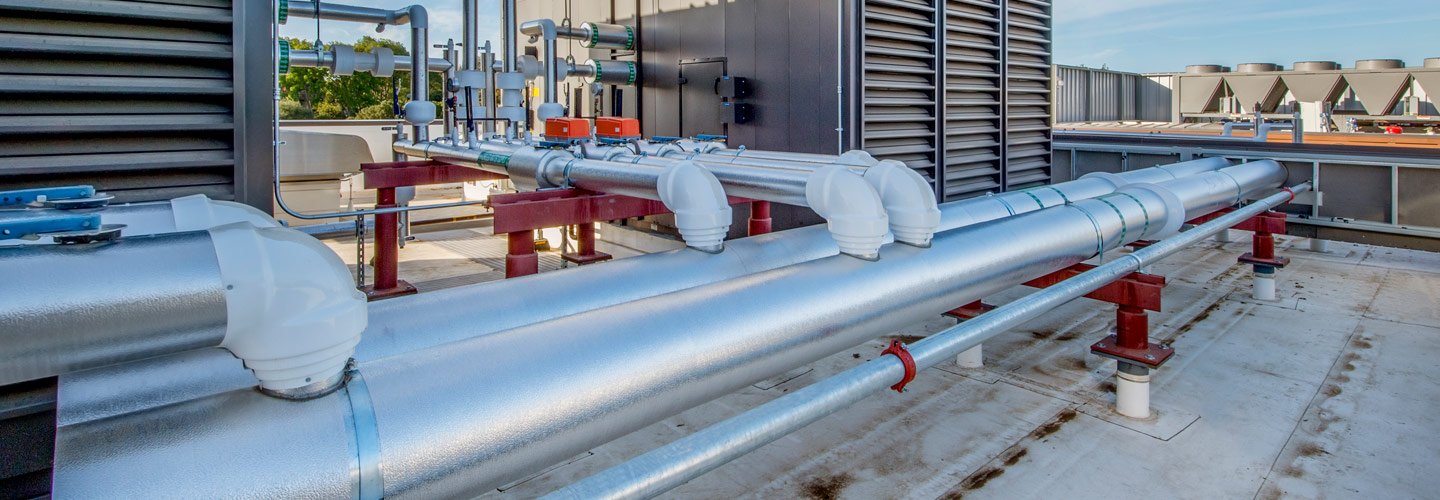Energy efficiency via recommissioning: the journey is the destination
Sustainable Energy Savings (SES) finds attractive savings across projects

When you ask Matthew Strebe CEO of SES, about recommissioning, he lights up with energy and excitement. After all, it’s his profession and passion. He’ll be quick to mention that 40 percent of our nation’s energy consumption stems from residential and commercial building operations.1 And if all of them were to commit to recommissioning, there could be significant opportunities to reduce energy use and costs.
Strebe believes, “Recommissioning should be an ongoing effort that’s always refreshed by applying new technologies and capabilities as they emerge. It’s a good way to maximize a building’s energy saving potential.”
Defining recommissioning
Also known as RCx, recommissioning is a re-optimization process that ensures existing equipment and systems operate at their full potential. It provides a rigorous investigative approach to identifying problems and systems integration issues.
The automobile analogy
Strebe’s central analogy for recommissioning is this: buildings are like our automobiles. After so many miles, they require tune-ups and maintenance to run efficiently for the long run. With building HVAC systems, that can mean fine-tuning existing systems, more-so than replacing parts.
Strebe immediately hits on three clear challenges, which are also opportunities for SES to help solve.
1) High energy use
2) Tenant comfort issues
3) High maintenance costs of equipment or systems
“These are often the underlying issues that rise to the attention of building managers and maintenance professionals,” notes Strebe.
What solutions can be implemented with recommissioning?
Right now, several tactics are used to take on the expense, comfort, and maintenance issues facing building managers and owners.
1) Leveraging seasonal changes of outdoor air (ambient) temperatures
Most buildings are not taking full advantage of seasonal changes that occur during the shoulder months” typically April/May and September/October when outdoor temperatures range between 40 and 70 degrees Fahrenheit. This is where economizers cool air by using outdoor air in place of a chiller or compressor.
2) Adapting to tenant schedules
The way a building is used will influence its energy demand. It’s all about occupancy. Think of a Nest or other types of learning thermostats. It uses a simple form of artificial intelligence to learn your schedule. It begins to understand that weekday schedules can be much different from weekend ones. The same logic can be used for occupancy levels in a building. Managing heating, cooling, and even lighting can help reduce energy use.
3) Demand control ventilation
This concept is realized as variable occupancy control and is growing in use. By measuring carbon dioxide levels, or occupancy levels, the system can adjust air movement to part-load capacity, thus conserving air movement and HVAC heating or cooling energy.
A good example is a conference room which may only be occupied 3-4 hours a day. And because CO2 sensor costs have come down, the ability to monitor small areas has become more affordable and practical.
Variable occupancy control is a big win for managing tenant comfort. Strebe comments, “Managing expectations is a delicate art. And the more local we can make the adjustability, the better.”
Sometimes it’s just too little, too late
While most buildings are good candidates for recommissioning, occasionally major equipment or components will reach the end of useful life. And monitoring performance is vital as building owners and facility managers want to avoid catastrophic failure of equipment to minimize any chance of compromising tenant comfort or unplanned equipment replacement costs.
Questioning the seven-year recommissioning schedule
As Strebe sees it, “the typical seven-year review cycle for doing a recommissioning report is too long. Every three to five years could be more beneficial. It’s surprising how often we find obvious efficiencies in less than seven years.”
Mini Case Studies
SES has helped local landmarks reduce energy use and reduce their bottom lines
- Target Field, home of the Minnesota Twins major league baseball team, was able to attain a one million kWh (Kilowatt hours) recovery. This was especially challenging because of the massive structure size and its intermittent and variable use. After less than a decade of use, Target Field was re-certified as LEED Gold -- the first in the U.S. Most of the efficiency was found through HVAC optimization and heat recovery.
- Atria Corporate Center is a 2015 LEED® Gold Recertified, five-story Class A office building in Plymouth, Minnesota. Even with its recent LEED status, SES provided a recommissioning study resulting in over 13% annual projected energy savings.
- Como Zoo was a unique project that incorporated high-energy animal spaces which operate 24/7 with demanding fresh air needs. Also, tight temperature and humidity requirements of plants all year round created energy-saving strategies that focused on heat recovery. SES was able to provide 39% natural gas 27% electric energy savings.
A smart business decision
“It’s not uncommon for SES recommissioning studies to demonstrate a one year or less payback on a project.” Strebe continues, “Some can even pay for themselves in as little as three months. Rebates and incentives from Xcel Energy help fulfill that rapid payback.”
Get more information on Xcel Energy's recommissioning incentives and rebates.


